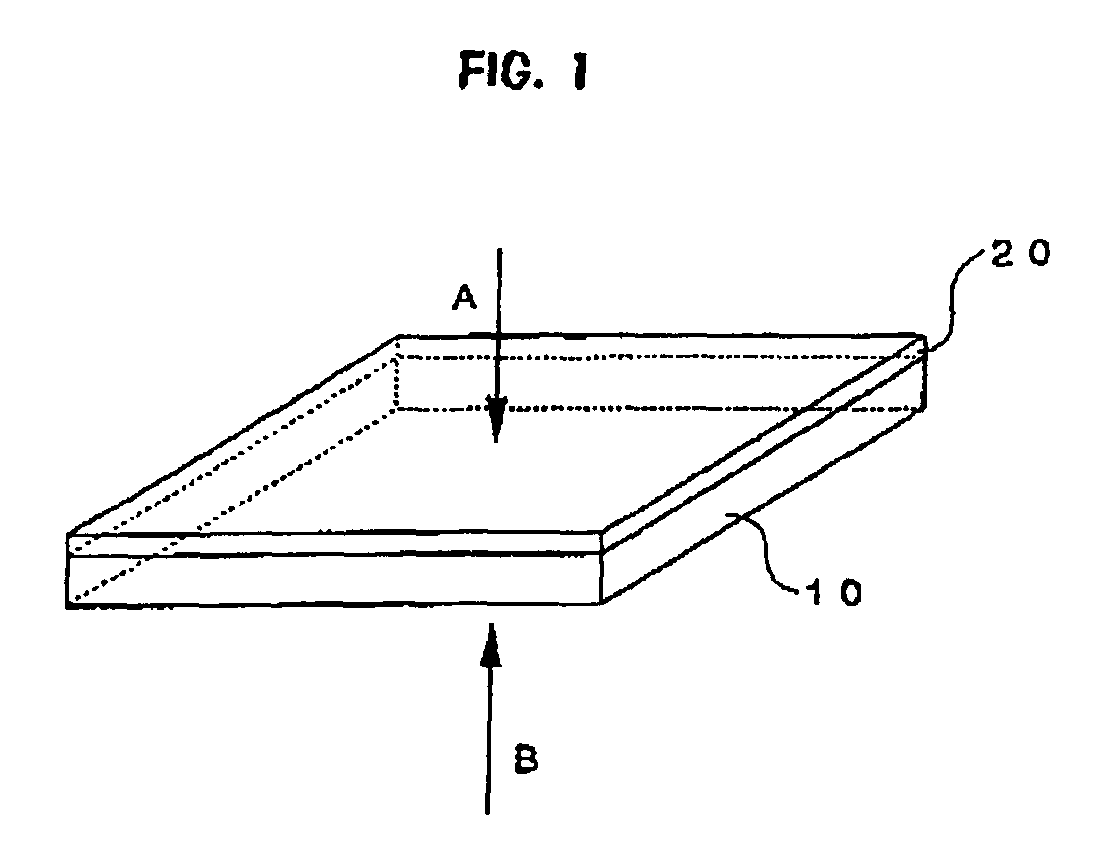Laminated film for electrophotography and method for producing same, and image forming method
a technology of electrophotography and film, applied in the direction of identification means, instruments, mechanical recording, etc., can solve the problems of reducing resolution, reducing printing speed, and not being able to print individual identification information, and achieve the effect of high resolution, high quality, and convenient lamination
- Summary
- Abstract
- Description
- Claims
- Application Information
AI Technical Summary
Benefits of technology
Problems solved by technology
Method used
Image
Examples
example 1
[0212]The method by which the electrophotographic laminated film (laminated film 1) of the invention is manufactured is described below with respect to each step.
Preparation of Function Control Layer Coating Liquid A-1
[0213]Mixed and thoroughly stirred are 10 parts of polyester resin (trade name: Thermorack P-1, manufactured by Soken Chemical & Engineering Co., Ltd., solid content in methylethyl ketone: 30% by weight) as a thermal-fusible resin, 9 parts of melamine-formaldehyde condensation fine particles (trade name: Epostar S, manufactured by Nippon shokubai Co., mean particle diameter: 0.3 μm) as a filler, 0.2 parts of a quaternary ammonium salt (trade name: Elegan 264 WAX manufactured by Nippon Oil & Fat Co.) as a surfactant, 30 parts of methylethyl ketone, and 5 parts of cyclohexanone, thereby preparing function control layer coating liquid A-1 for controlling surface luster and surface resistance.
Preparation of Image Receiving Layer Coating Liquid B-1
[0214]Mixed and thoroughly...
example 2
[0229]Laminated film 2 is produced by the same method as in Examples 1, except that a polycarbonate film (manufactured by Mitsubishi Gas Chemical Company, Inc., lead deflection temperature: 145° C., thickness: 100 μm) using bisphenol Z is used in place of the polycarbonate film using bisphenol A used in Example 1.
[0230]The laminated film 2 has a surface resistance of 1.0×1013 Ω / □ on the surface of the function control layer and a surface resistance of 1.30×1011 Ω / □ on the surface of the image receiving layer, which are the same as those in Example 1. The results are summarized in Table 1.
example 3
Manufacture and Evaluation of Electrophotographic Laminated Film
[0231]Laminated film 3 is produced by the same method as in Examples 1. except that a polycarbonate film (manufactured by Mitsubishi Gas Chemical company, Inc., lead deflection temperature: 150° C., thickness: 100 μm) using bisphenol AP is used in place of the polycarbonate film using bisphenol A used in Example 1.
[0232]The laminated film 3 has a surface resistance of 7.5×1011 Ω / □ on the surface of the function control layer and a surface resistance of 2.8×1011 Ω / □ on the surface of the image receiving layer. The film is cut into A4 size, and is evaluated as in Example 1. The results are summarized in Table 1.
PUM
| Property | Measurement | Unit |
|---|---|---|
| load deflection temperature | aaaaa | aaaaa |
| thickness | aaaaa | aaaaa |
| thickness | aaaaa | aaaaa |
Abstract
Description
Claims
Application Information
 Login to View More
Login to View More - R&D
- Intellectual Property
- Life Sciences
- Materials
- Tech Scout
- Unparalleled Data Quality
- Higher Quality Content
- 60% Fewer Hallucinations
Browse by: Latest US Patents, China's latest patents, Technical Efficacy Thesaurus, Application Domain, Technology Topic, Popular Technical Reports.
© 2025 PatSnap. All rights reserved.Legal|Privacy policy|Modern Slavery Act Transparency Statement|Sitemap|About US| Contact US: help@patsnap.com



